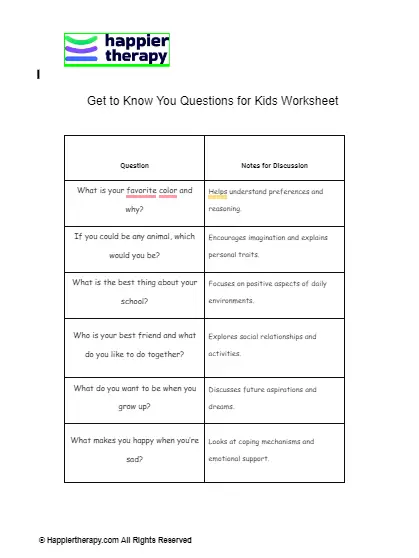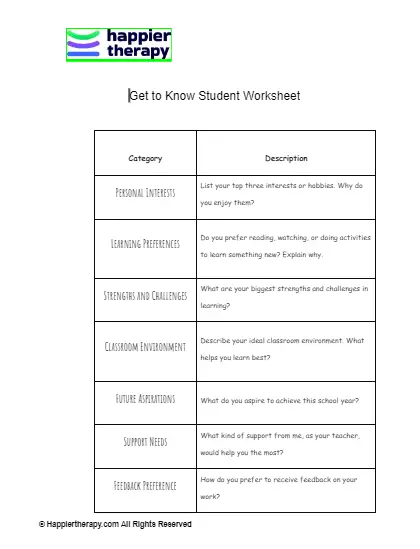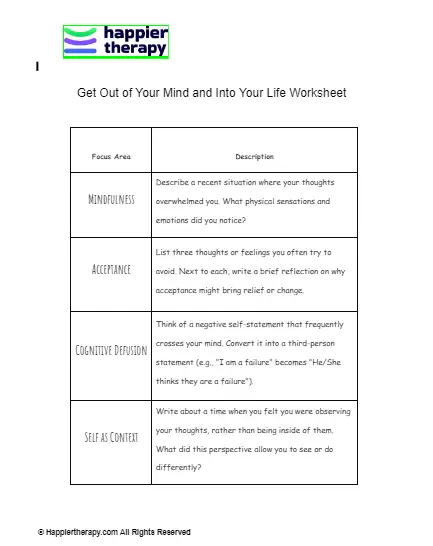Understanding Healthy Sexual Behaviors Worksheet
Premium Content
Access this worksheet and 2,500 mental health worksheets. Cancel anytime
What is the theory behind this worksheet?
The Theory behind the worksheet “A- Understanding Healthy Sexual Behaviors”
Unlock deeper healing — upgrade to Premium now!
Customizable and fillable worksheets
Rights to alter the worksheets
Over 2000 worksheets
Support HappierTherapy
This worksheet uses Scenario-based questions to trigger thinking around sexual behaviours. It helps the client assimilate various scenarios in social situations which may call upon the client’s social judgement to portray sexual behaviour. This is a self-directed education technique suitable for adult learners(1). It helps in using awareness and education to modify target behaviour as described in various health-behaviour models like the Health Belief Model, Social Cognitive Theory, and Theory of Planned Behavior. These provide frameworks for understanding how awareness and education influence behaviour change by addressing factors such as perceived susceptibility, severity, benefits, barriers, self-efficacy, social norms, and intentions, which is one of the basic interventions in changing behaviour(2)
The Theory behind the Worksheets B & C
These worksheets aim to explore the underlying assumptions and beliefs that led to the behaviours in question and function on the premise employed in the Rational-Emotive Behaviour Therapy (REBT) that it is not the events in our lives that cause us distress, but rather our beliefs about those events.(3) REBT, especially the Cognitive Behaviour part of it has been frequently used to help sex offenders avoid recidivism(4,5)
How will the worksheet help?
The first worksheet will help decrease the offensive behaviour by shifting the clients’ perspective on what is acceptable and healthy sexual behaviour, he/she might be unaware of the inappropriateness of his/her actions. It may also help the therapist understand the client’s understanding of appropriate conduct and open up an avenue of discussion that may not otherwise have come up in the therapy sessions.
The other two worksheets will help the client reflect on the act and the happenings around it. It may reveal niches of therapeutic work that are likely to help in meaningful and long-term recoveries since problems with self-regulation and sexual preoccupations are found to be a common characteristic of repeat offenders in a large meta-analysis(6). These sheets that make the client dwell on their thoughts, internal feelings, and consequent beliefs will open up opportunities for the client to work towards narrowing down the causative preoccupations and self-regulation difficulties. These will also provide a framework for coming up with a strategy to dispute the underlying irrational beliefs and move towards healthy thought and behaviour(7)
How to use the worksheet?
The first worksheet can be given both as an activity during the session and as homework. The specific usefulness will come from discussing it after the client has attempted it. This post-task discussion serves as a valuable opportunity for the therapist to explore the client’s responses, delve into any challenges or insights encountered during the completion of the worksheet, and provide necessary guidance or clarification. Through this interactive process, the therapist can gain deeper insights into the client’s thought patterns, triggers, and areas requiring further exploration or intervention, ultimately enhancing the effectiveness of therapeutic interventions tailored to address sex-offending behaviors.
The other two worksheets should be filled once during the session with the therapist to help the client understand how to do it and then at most 2 instances should be expected from the client to fill in a week at the start. Once they are filled by the client the therapist can discuss the cognitive process used by the client to complete them, identify room for improvement, and advise on future practice. It can be used as long as required which may be determined on a case-to-case basis but in general, when the client can identify all the listed thoughts and feelings about a certain act without having to consult the list, they may have sufficiently internalized the process, indicating readiness to transition from reliance on the list to independently applying the principles of Rational Emotive Behavior Therapy (REBT) in managing their thoughts and emotions.

 By
By


